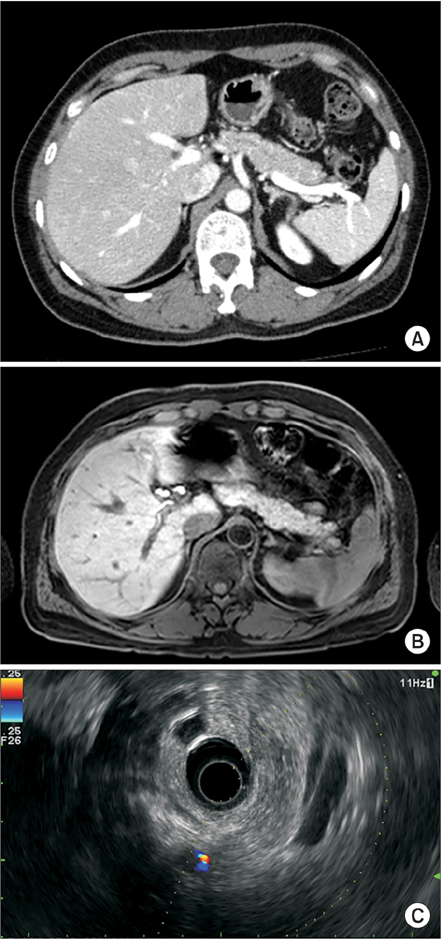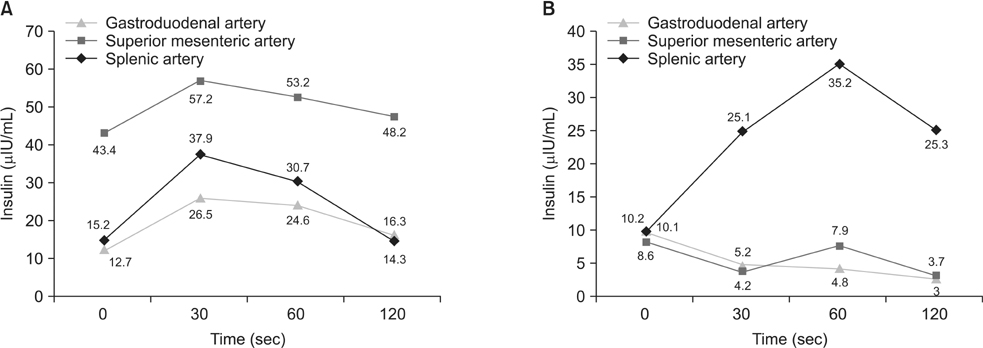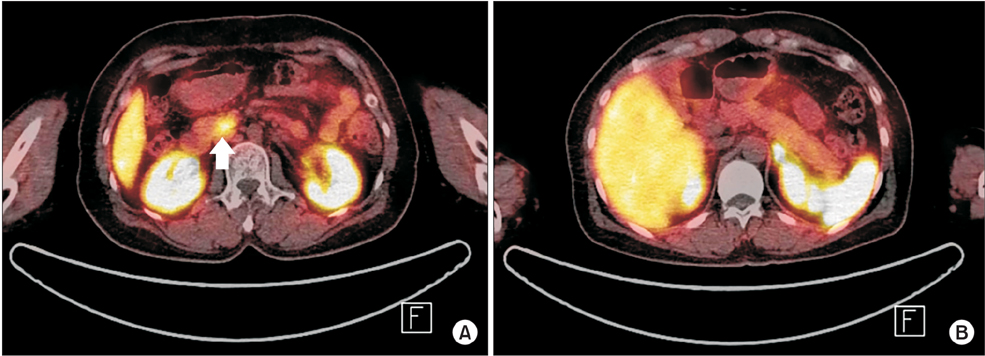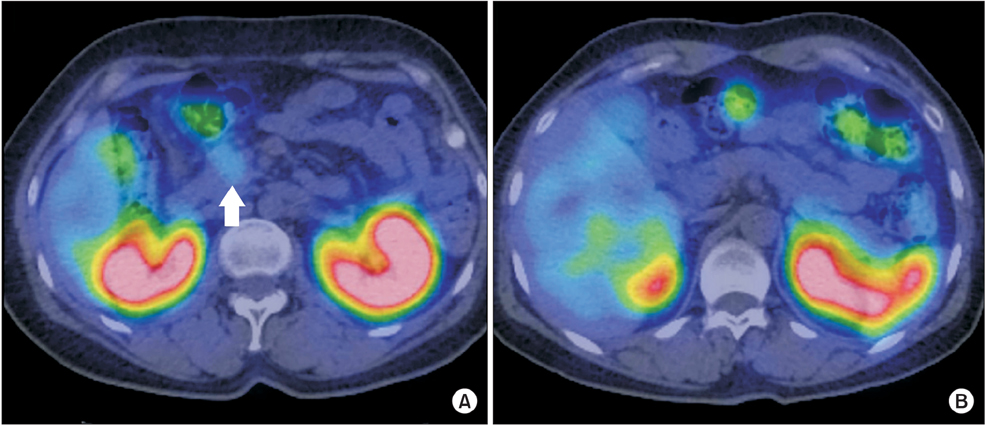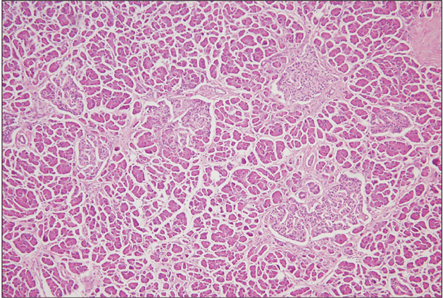Ann Surg Treat Res.
2016 Jul;91(1):51-55. 10.4174/astr.2016.91.1.51.
Difficult diagnosis and localization of focal nesidioblastosis: clinical implications of â¶â¸Gallium-DOTA-D-Phe¹-Tyr³-octreotide PET scanning
- Affiliations
-
- 1Department of Surgery and Cancer Research Institute, Seoul National University College of Medicine, Seoul, Korea. jangjy4@snu.ac.kr
- 2Department of Internal Medicine, Seoul National University College of Medicine, Seoul, Korea.
- KMID: 2327417
- DOI: http://doi.org/10.4174/astr.2016.91.1.51
Abstract
- Focal nesidioblastosis is a rare cause of endogenous hyperinsulinemic hypoglycemia in adults. Because it is difficult to localize and detect with current imaging modalities, nesidioblastosis is challenging for biliary-pancreatic surgeons. â¶â¸Gallium-DOTA-D-Phe¹-Tyr³-octreotide PET scanning and ¹¹¹indium-pentetreotide diethylene triamine pentaacetic acid octreotide scanning may be superior to conventional imaging modalities in determining the localization of nesidioblastosis. We report the successful surgical treatment of a 54-year-old woman with focal hyperplasia of the islets of Langerhans, who experienced frequent hypoglycemic symptoms and underwent various diagnostic examinations with different results.
MeSH Terms
Figure
Reference
-
1. Stanley CA, Lieu YK, Hsu BY, Burlina AB, Greenberg CR, Hopwood NJ, et al. Hyperinsulinism and hyperammonemia in infants with regulatory mutations of the glutamate dehydrogenase gene. N Engl J Med. 1998; 338:1352–1357.2. Laidlaw GF. Nesidioblastoma, the islet tumor of the pancreas. Am J Pathol. 1938; 14:125–134.3. Starke A, Saddig C, Kirch B, Tschahargane C, Goretzki P. Islet hyperplasia in adults: challenge to preoperatively diagnose noninsulinoma pancreatogenic hypoglycemia syndrome. World J Surg. 2006; 30:670–679.4. McElroy MK, Lowy AM, Weidner N. Case report: focal nesidioblastosis ("nesidioblastoma") in an adult. Hum Pathol. 2010; 41:447–451.5. Doppman JL, Shawker TH, Miller DL. Localization of islet cell tumors. Gastroenterol Clin North Am. 1989; 18:793–804.6. Guettier JM, Kam A, Chang R, Skarulis MC, Cochran C, Alexander HR, et al. Localization of insulinomas to regions of the pancreas by intraarterial calcium stimulation: the NIH experience. J Clin Endocrinol Metab. 2009; 94:1074–1080.7. Doppman JL, Miller DL, Chang R, Shawker TH, Gorden P, Norton JA. Insulinomas: localization with selective intraarterial injection of calcium. Radiology. 1991; 178:237–241.8. Srirajaskanthan R, Kayani I, Quigley AM, Soh J, Caplin ME, Bomanji J. The role of 68Ga-DOTATATE PET in patients with neuroendocrine tumors and negative or equivocal findings on 111In-DTPA-octreotide scintigraphy. J Nucl Med. 2010; 51:875–882.9. Buchmann I, Henze M, Engelbrecht S, Eisenhut M, Runz A, Schafer M, et al. Comparison of 68Ga-DOTATOC PET and 111In-DTPAOC (Octreoscan) SPECT in patients with neuroendocrine tumours. Eur J Nucl Med Mol Imaging. 2007; 34:1617–1626.10. Reubi JC, Schar JC, Waser B, Wenger S, Heppeler A, Schmitt JS, et al. Affinity profiles for human somatostatin receptor subtypes SST1-SST5 of somatostatin radiotracers selected for scintigraphic and radiotherapeutic use. Eur J Nucl Med. 2000; 27:273–282.
- Full Text Links
- Actions
-
Cited
- CITED
-
- Close
- Share
- Similar articles
-
- Ga68-DOTA Peptide PET/CT to Detect Occult Mesenchymal Tumor-Inducing Osteomalacia: A Case Series of Three Patients
- Radiolabeling of NOTA and DOTA with Positron Emitting 68Ga and Investigation of In Vitro Properties
- Chronologic Change of Hyperinsulinemic Hypoglycemic Disease-insulinoma and Nesidioblastosis in 64 Patients
- A Case of Focal Type Nesidioblastosis in Adult Treated with Distal Pancreatectomy
- Role of 68Ga-DOTATATE PET/CT in a Case of SDHB-Related Pterygopalatine Fossa Paraganglioma Successfully Controlled with Octreotide

